A genus of deciduous trees in the family Fagaceae, native to temperate Europe, Asia, and North America.
Classification systems of the genus recognize 10 to 13 species in two distinct subgroups, Engleriana and Fagus. The Engleriana subgenus is found only in East Asia, and is notably distinct from the Fagus subgenus in that these beeches are low-branching trees, often made up of several major trunks with yellowish bark.
Further differentiating characteristics include the whitish bloom on the underside of the leaves, and the visible tertiary leaf veins.
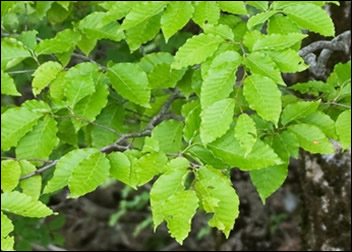
Fagus japonica – Japanese beech
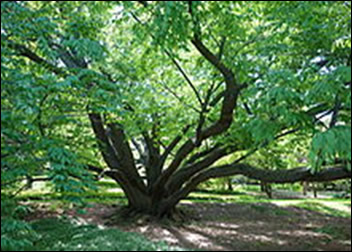
Fagus engleriana - Chinese beech
The best known Fagus subgenus beeches are high-branching with tall, stout trunks and smooth silver-grey barked. Fagus sylvatica – the European beech, extending from southern Sweden to northern Sicily, west to France, southern England, northern Portugal, central Spain, and east to northwest Turkey. Fagus grandifolia - great or large beech grows in USA to 35 metres; Fagus crenata – Siebolds beech or sometimes Japanese beech; Fagus lucida – Chinese beech, and Fagus hayatae – Taiwan beech.
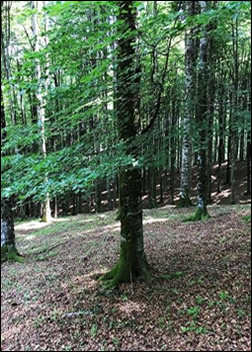
European beech
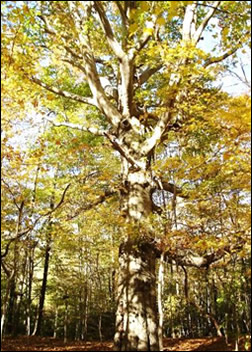
USA great beech
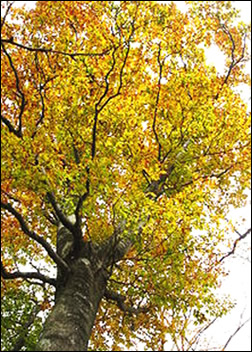
Japanese beech
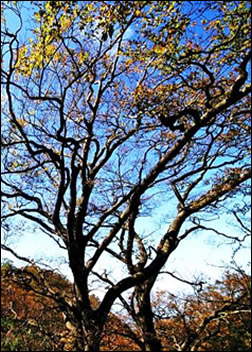
Taiwan beech
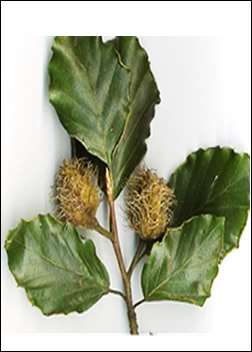
European beech leaves and fruit
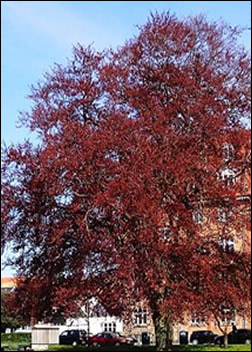
European Copper beech
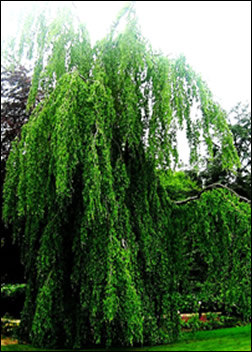
European beech pendula
The European beech
The European beech has several significant requirements: a humid atmosphere, precipitation well distributed throughout the year and well-drained soil; they do not like stagnant water. They prefer moderately fertile, lightly acidic soil, therefore they are found more often on the side of a hill than at the bottom of a clayey basin. They can tolerate rigorous winter cold, but are sensitive to spring frost.
Growth in summer has significant affect upon the next season’s growth. Conditions needed in summer, particularly good rainfall, determines the number of leaves included in the buds. In autumn, the tree builds the reserves that will sustain it into spring. Given good conditions, a bud can produce a shoot with ten or more leaves. The terminal bud emits a hormonal substance in the spring that halts the development of additional buds. They are good trees to use as bonsai but the must affect your trimming regime for these trees.
Beech bonsai produce just one flush of growth each year during May. Wild growing beech may, if vigorous, have a second flush of growth in July.
The slow growth rate and general lack of back budding can result in beech bonsai having long thin primary branches that just have ramification on the tips.
It is very important to realize that any branches that are pruned back must be done so that there is at least one visible bud left, otherwise the whole branch may fail and dieback.
Beech shoot in early May, just after the bud has started to extend. This is the right time for pinching back this shoot.
As the new shoots start to extend, cut the new shoots back, leaving the first 2 leaves at the base of the shoot. Weaker low and inner shoots can be cut back to 3 or 4 leaves if necessary or left longer if extension is required.
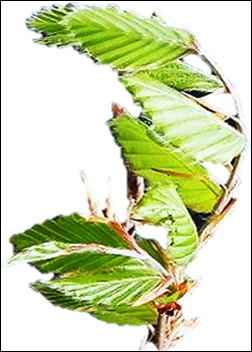
The strongest buds ‘A’ should be cut back to strengthen the weaker buds and subsequently allow a second flush to develop. The lower branch should be allowed to extend and improve the structure of the tree.
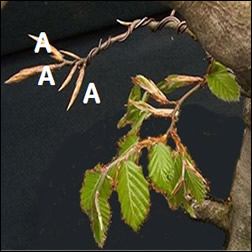
Buds on beech will not all open at the same time; the strongest buds will open first followed by the weaker new growth. After pinching allow weaker buds to extend and strengthen; carry out further pinching only if new buds appear. If the tree is weak this will not happen until the following season.
Pinching back should ensure that all remaining inner buds will go on to produce a new shoot and not die back.
Defoliating should be at least partial and not for the usual reason of reducing leaf size although this is an added bonus. It is because beech can produce such dense canopies of leaves that the branches on the interior will die back for lack of light. New inner shoots and leaves will also fail to open and replace them. Allowing light into the canopy will help strengthen the inner shoots and branches. However beech will respond very badly to complete removal of all of the foliage at one go but they respond well to partial defoliation.
Start by removing the largest leaves found on the tips of the branches
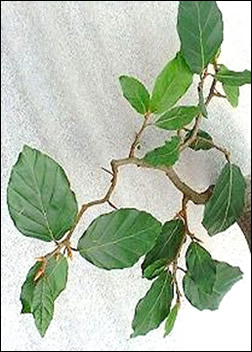
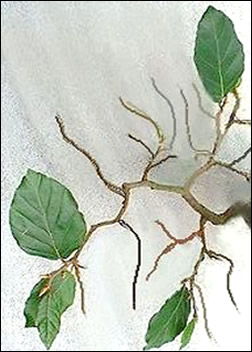
That is quite enough to allow light in.
Pruning back in winter is needed to create the shape you are working to. Branches can be pruned back hard to create taper and movement in the branch as well as to shorten the overall length of the branch resulting in foliage that is closer to the trunk.
They will respond well to pruning as hard as this provided that the vital last bud is left so that the branch does not die back.
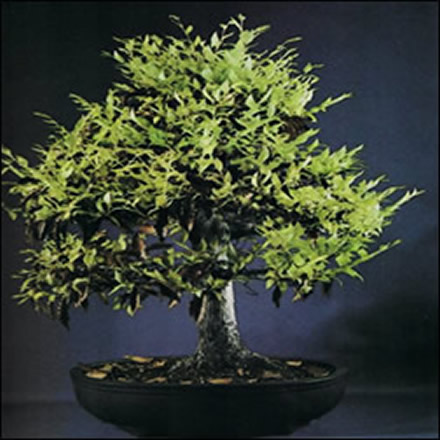
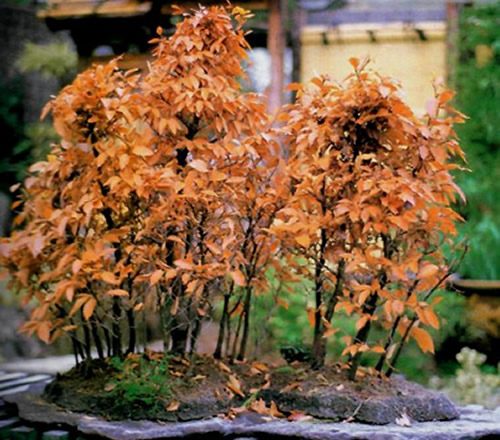
An old beech and a beech group (see above) both photographed in winter with the dead leaves still present, to the extent that the large old tree is even producing its new leaves while still not having lost last years.
One significant feature of beech trees is the fact that in autumn, the dead leaves from that season do not drop as in most species; they do not fall until the new leaves open in spring. Do not rush to cut them off - there is a reason for this characteristic and that is protection in harsh conditions, for newly forming buds. In a mild winter or with winter protection, no harm is done in removing the leaves but always cut the petiole, never pull or you will damage next year’s growth
Beech bark disease is a fungal infection that attacks beech. The damage is initiated by scale insects and infection can lead to the death of the tree
Beech leaf disease is a newly discovered lethal disease of beech trees. The symptoms of the disease appear as a dark green, interveinal banding pattern on the lower canopy foliage, eventually spreading throughout the tree. The symptoms appear to progress through the buds and no new leaves are produced. This eventually results in the death of the tree. This disease affects the native American beech as well as the European beech. The disease has no known cure.